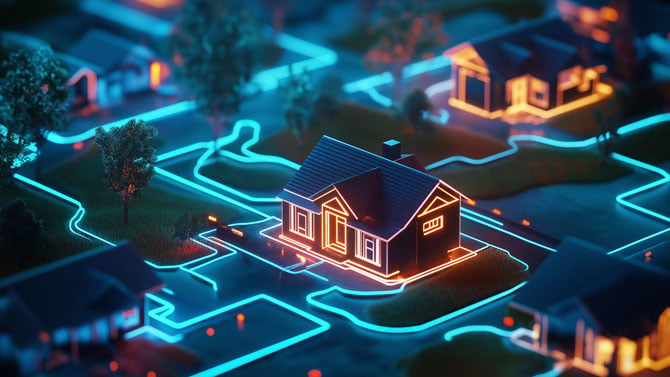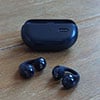Today’s smart homes are more connected than ever, and according to Verizon’s latest Consumer Connections Report, the growing number of smart home devices may be causing more strain on their home networks than people realize. The average Verizon household now has 18 connected devices, from smart TVs and streaming sticks to doorbell cameras, security systems, and AI-powered appliances. While these devices promise convenience, they also use data and can congest your home network and impact network performance.

Verizon’s report also reveals that the average household now consumes 656GB of data per month, up 6% from last year, and while entertainment streaming and gaming account for a significant portion of that, smart home devices may be using far more data than people expect. A single security camera recording in HD 24/7 can consume anywhere from 50GB to over 500GB per month if it’s syncing to the cloud, meaning a household with multiple cameras and other always-on gadgets may be using hundreds of gigabytes just on smart home technology alone.
Even if you have an unlimited data plan, too many smart home devices can lead to slowdowns, buffering, and ISP throttling. That 200 or 300Mbps plan you have doesn’t guarantee those speeds – it’s an “up to” number. That’s especially true if you use a cable ISP, which distributes service among multiple households (Fiber systems like Verizon FiOS have a direct connection to your home.). During peak hours, when demand is high, you may experience much lower than advertised speeds. And cable providers typically offer "asymmetric" services, with much lower upload speeds than download.
Read more: FCC Forces ISPs to Be Honest with Consumers
According to Ookla’s latest Speedtest data, the median U.S. home internet speed is 130.41Mbps for downloads and just 9.40Mbps for uploads. While download speeds are often more than enough for streaming and browsing, upload speeds are where congestion becomes a real issue – especially in smart homes with multiple connected devices.
Let’s put that into perspective. If a household has two security cameras uploading 1080p footage to the cloud (4Mbps each), a video doorbell recording a package delivery (2Mbps), and someone making a video call on a smart display (1Mbps), that’s already 11Mbps of upload usage – surpassing the median U.S. upload speed. Now, if someone in the household joins a Zoom call (6Mbps) and a child starts a Twitch livestream while gaming (8Mbps), the total upload demand jumps to 25Mbps or more, overwhelming the available bandwidth on a 9.40Mbps upload connection.
If you’ve noticed buffering while streaming, laggy video calls, or slow-loading security cameras, your smart home devices may be using more bandwidth than you realize. The good news is that you don’t have to remove devices to improve performance – you just need to manage your network more efficiently.
One of the best ways to ensure a smooth experience is by prioritizing essential devices on your network. Many modern routers allow you to set Quality of Service (QoS) rules, which prioritize critical activities like video calls and gaming over background tasks like cloud uploads from security cameras. If you frequently experience lag in Zoom calls or interruptions while streaming, adjusting these settings can prevent less urgent smart home devices from consuming too much bandwidth at the wrong time.
Another effective strategy is adjusting security camera recording settings to reduce unnecessary data consumption. While 4K video provides high clarity, it uses significantly more upload bandwidth than 1080p. Lowering the resolution of your security cameras can cut data usage by up to 75%, reducing congestion without sacrificing too much detail. An even bigger bandwidth saver is switching from continuous 24/7 recording to motion-triggered recording, which prevents cameras from uploading massive amounts of footage when there’s no activity, freeing up bandwidth for other devices..
For homes with dozens of connected devices, upgrading to a WiFi 6 (or higher) mesh network can make a huge difference. WiFi 6 routers are designed to handle more simultaneous connections efficiently, meaning that even when multiple smart home gadgets are online, your speeds remain stable. A mesh WiFi system can also help eliminate dead zones and distribute bandwidth evenly throughout your home, preventing slowdowns in areas where multiple devices are active. I use and recommend the Eero Pro 6E ($399.99 for a two-pack covering 4,000 sq. ft.).
Read more: How to Get Better WiFi
So, how many smart home devices are too many? The number of smart home devices a household can handle isn’t just about quantity – it’s about how they use bandwidth. Security cameras, cloud backups, and video calls all rely heavily on upload speeds, and even a 300Mbps cable plan can struggle when too many devices compete for upload bandwidth during peak hours.
The key isn’t necessarily fewer smart devices – it’s better management of their impact on your network. By prioritizing critical devices, adjusting security camera settings, and upgrading to a mesh WiFi 6 system, you can avoid slowdowns and keep your smart home running smoothly.
[Image credit: Techlicious/Midjourney]















